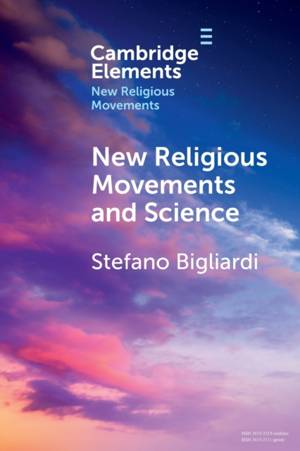
Door een staking bij bpost kan je online bestelling op dit moment iets langer onderweg zijn dan voorzien. Dringend iets nodig? Onze winkels ontvangen jou met open armen!
- Afhalen na 1 uur in een winkel met voorraad
- Gratis thuislevering in België vanaf € 30
- Ruim aanbod met 7 miljoen producten
Door een staking bij bpost kan je online bestelling op dit moment iets langer onderweg zijn dan voorzien. Dringend iets nodig? Onze winkels ontvangen jou met open armen!
- Afhalen na 1 uur in een winkel met voorraad
- Gratis thuislevering in België vanaf € 30
- Ruim aanbod met 7 miljoen producten
Zoeken
Omschrijving
This Element shows how New Religious Movements variously conceptualize science and provides readers with an overview of the scholarly conversation surrounding this phenomenon. The first section describes five movements that, in different ways, include relevant references to science in their doctrines: Dianetics/Scientology, the Raëlian Movement, Falun Gong, Stella Azzurra (an Italian Santo Daime group), and Bambini di Satana (an Italian Satanist group). The conceptualization of science within such movements is examined in reference to official beliefs conveyed by the writings and claims of their respective leaders, but ethnographic work among affiliates is included as well. The second section reconstructs academic contributions by scholars who identify notable trends in the conceptualization of science within new religious movements, or have developed typologies to describe that very understanding. The third section concludes the discussion of new religious movements and science by offering suggestions regarding novel directions that the study of their relationship may take.
Specificaties
Betrokkenen
- Auteur(s):
- Uitgeverij:
Inhoud
- Aantal bladzijden:
- 75
- Taal:
- Engels
- Reeks:
Eigenschappen
- Productcode (EAN):
- 9781009108393
- Verschijningsdatum:
- 18/05/2023
- Uitvoering:
- Paperback
- Formaat:
- Trade paperback (VS)
- Afmetingen:
- 152 mm x 229 mm
- Gewicht:
- 122 g

Alleen bij Standaard Boekhandel
+ 63 punten op je klantenkaart van Standaard Boekhandel
Beoordelingen
We publiceren alleen reviews die voldoen aan de voorwaarden voor reviews. Bekijk onze voorwaarden voor reviews.











